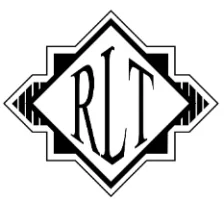How is RLT Different From Other CBT Approaches?
Rational Living Therapy is a form of cognitive-behavioral therapy (CBT). The main recognized forms of CBT are Rational Living Therapy (Pucci), Rational Emotive-Behavior Therapy (Ellis), Rational Behavior Therapy (Maultsby), and Cognitive Therapy (Beck). The cognitive-behavioral therapies have some similarities, including:
- Being based on the cognitive model of emotional response (ABCs of Emotions)
- Being briefer and time-limited
- Being a collaborative effort between the client and the therapist
- Utilizing the Socratic method
- Being based on an educational model
- Relying on the inductive method
- Emphasizing homework.
However, Rational Living Therapy differs from other CBT approaches in the following ways.
Rational Living Therapy is very systematic and structured. Its progression makes good therapeutic sense. From the second session forward, each session has four components.
Rational Living Therapy rejects psychiatric diagnostic labeling and the medical model. Its main diagnostic concern is whether the client’s presenting emotions and behavior are primarily learned or not-learned (the result of thinking or the result of a physical problem that is producing those symptoms). Psychiatric diagnoses give both the client and the therapist the impression that the client “has” a disorder, and that disorder is what is making the client feel and act as they do. For example, if a client is diagnosed as “having” Borderline Personality Disorder, that diagnosis will give the client the impression that Borderline Personality Disorder dwells within them and is causing the client to act in problematic ways. Instead, the diagnostic label is just a label for a set of behaviors.
Rational Living Therapy’s ABCs of Emotions explain or describe a person’s reaction to anything. RLT’s ABCs can be applied to reaction. Other approaches’ ABCs (like REBT’s ABCs) are used as a therapeutic tool and reserved for unwanted emotions and behaviors.
Rational Living Therapy teaches that there are three emotional options, not two.
Rational Living Therapy rejects the concepts of self-esteem and self-acceptance. RLT believes that the concept of “self” is so vague that it is useless therapeutically. Additionally, the concept of self tends to lead to overgeneralization. Finally, since we are stuck with ourselves, it is impractical to reject ourselves. Therefore, we cannot help but accept ourselves. RLT replaces self-esteem and self-acceptance with the 4 A’s.
Rational Living Therapy rejects common erroneous labels for emotions. It is very precise about emotive labels and the distinction between evaluations and emotions, whereas other approaches to CBT appear to be unconcerned about this distinction. For example, many people say, “I feel inadequate.” “Inadequate” is not a feeling; it is an evaluation or thought — “I think of myself as being inadequate.” The therapeutic approach called “DBT”, for example, talks about “feelings of worthlessness”. However, there is no such thing as a FEELING of worthlessness. That is an evaluation (I am worthless), which is a thought. RLT therapists emphasize this because humans do not dispute feelings. We only dispute thoughts.
Rational Living Therapy integrates hypnotherapy theory and techniques. Not only does RLT utilize hypnotherapy techniques at times in the therapeutic process, but it also integrates it theoretically in terms of how people learn thoughts. People often learn problematic thoughts through unintentional hypnotic episodes.
Rational Living Therapy revolves around the fact that you cannot have a practical problem without having a goal. RLT revolves around that fact. Often, through RLT, people who make themselves miserable about things discover that those things are not even problems for them. They had been making themselves upset about the idea of it, not the consequence of it.
Rational Living Therapy utilizes persuasive techniques to benefit the client. Clients often resist therapy because they are convinced that they are correct. Most approaches to CBT do not have techniques to utilize systematically to help the client to overcome their resistance so that they can get well.
